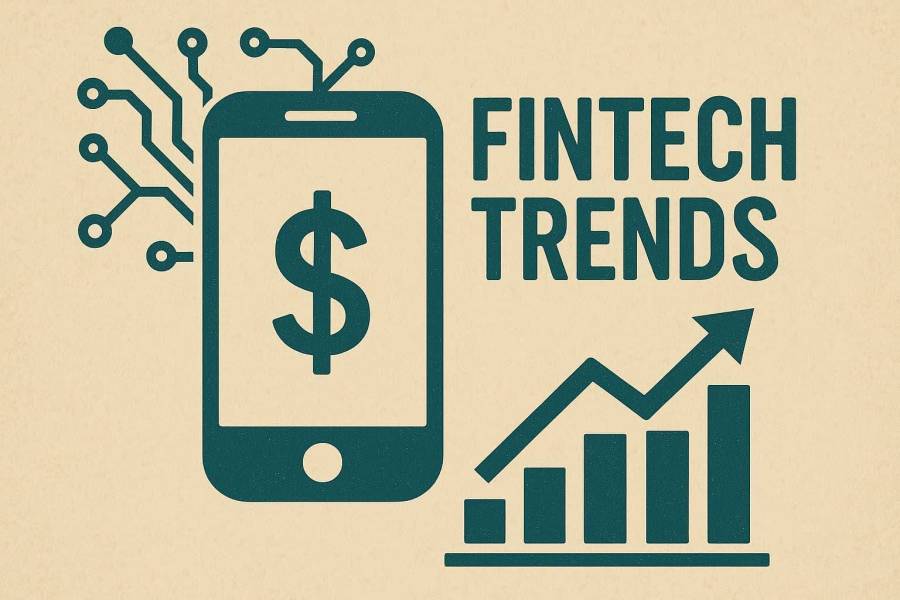Fintech is changing fast. Every year brings new innovations, tools, and services. This year is no different. Let’s dive into the top fintech trends you’ll want to keep an eye on.

1. The Rise of Embedded Finance
One of the most significant trends in fintech is the rise of embedded finance. This concept refers to integrating financial services within non-financial platforms (NFP), allowing businesses to offer services such as payments, lending, or insurance directly to their users.
In 2025, NFP meaning fully integrating financial services is expected to reach $230 billion, making it a major player in fintech. This trend has been gaining momentum as more and more consumers are turning to digital channels for their financial needs.
2. The Explosion of Buy Now, Pay Later
Buy Now, Pay Later (BNPL) isn’t new. But its popularity has skyrocketed recently. Why? Consumers love flexibility. BNPL lets people purchase items and spread costs over time without high interest rates. Businesses also win by increasing conversions.
This trend is especially booming among younger generations. Instead of traditional credit cards, they’re choosing BNPL options when shopping online. Major players like Klarna, Afterpay, and Affirm are driving this shift.
However, regulators are stepping in. Transparency and responsibility are becoming key topics here. The goal is to ensure fair practices for all users.
3. Artificial Intelligence in Financial Services
Artificial Intelligence (AI) is transforming fintech. It’s making banking smarter and more personal. AI allows for better fraud detection, customer support, and personalized financial advice. Banks and fintech startups can serve their customers more effectively.
Chatbots powered by AI are everywhere. They provide quick, around-the-clock support. On the other hand, machine learning is helping lenders assess risks. By analyzing data more accurately, AI also lowers costs for companies.
AI is also playing a role in investment. Robo-advisors can build and manage portfolios for users. This technology isn’t just for big banks anymore. Small businesses and individuals are benefiting too.
4. Central Bank Digital Currencies (CBDCs) Take Shape
Digital currencies are gaining momentum. Unlike cryptocurrencies, CBDCs are backed by governments. They aim to bridge the gap between traditional money and digital systems.
More nations are piloting CBDCs. China’s digital yuan is already in use. Others are closely following. They could bring faster, safer transactions for everyone. They might also expand financial access in underbanked regions.
This shift raises questions. How will CBDCs coexist with traditional fintech solutions? Will they help or hinder innovation? The coming year could offer answers.
5. Sustainable Fintech Gains Traction
Sustainability isn’t just a buzzword anymore. It’s becoming a must-have for fintech companies. Customers expect businesses to care about the environment. This has given rise to green finance and sustainable fintech solutions.
For instance, some companies are offsetting carbon emissions for users’ transactions. Others are building tools to track spending habits with a focus on sustainability. These values align with the latest financial trends around ethical investing. More people want their financial choices to support a better future.
Fintech plays a huge role here. It brings transparency to the table. Apps and platforms help consumers see where their money goes. This empowers them to make better decisions.
6. Decentralized Finance (DeFi) Matures
Decentralized Finance, or DeFi, has evolved. Built on blockchain, it offers peer-to-peer financial services without needing banks. While it’s been around for a few years, regulators are now paying close attention.
DeFi started with simple lending and borrowing. Now, it powers more complex systems. Think insurance, trading, and savings accounts. All decentralized.
The adoption is growing beyond tech enthusiasts. More mainstream platforms are bringing DeFi into their frameworks. However, with great opportunity comes great responsibility. Security remains a key concern. Expect improvements in 2024.
7. Open Banking Expands
Open banking is all about sharing customer data (with permission) between banks and third-party providers. It enables users to access tailored services. They can manage everything from budgeting to loans from a single app.
This trend is growing due to regulation in many countries. It brings competition, transparency, and better services. Users benefit from innovations powered by their banking data.
However, proper safeguards are critical. Companies must secure data while delivering seamless experiences. Open banking has huge potential to reshape how people manage money globally.
8. The Push for Financial Inclusion
Not everyone has equal access to financial services. Fintech has been narrowing this gap. Mobile banking apps, microloans, and affordable remittance services are making a difference in underserved areas.
Emerging markets continue to drive this trend. Fintech companies are creating solutions tailored to their needs. Digital wallets are replacing cash in many parts of the world. Those who never had bank accounts are now enjoying financial freedom.
This focus on inclusion is vital for global progress. We expect fintech to prioritize accessibility more in the year ahead.
What’s Next?
Fintech isn’t slowing down. Each of these trends shows how it’s reshaping how we handle money. Whether it’s innovative technologies or sustainable practices, the coming year has a lot in store.
If you’re in business, a tech enthusiast, or just curious, these trends are worth watching. Fintech is changing how we live, and the future looks bright. Keep an eye on these developments and see how they can impact your world.

Peyman Khosravani is a global blockchain and digital transformation expert with a passion for marketing, futuristic ideas, analytics insights, startup businesses, and effective communications. He has extensive experience in blockchain and DeFi projects and is committed to using technology to bring justice and fairness to society and promote freedom. Peyman has worked with international organizations to improve digital transformation strategies and data-gathering strategies that help identify customer touchpoints and sources of data that tell the story of what is happening. With his expertise in blockchain, digital transformation, marketing, analytics insights, startup businesses, and effective communications, Peyman is dedicated to helping businesses succeed in the digital age. He believes that technology can be used as a tool for positive change in the world.








